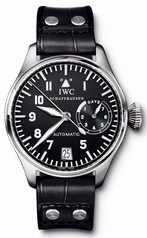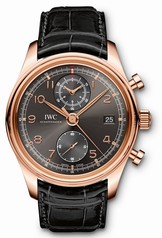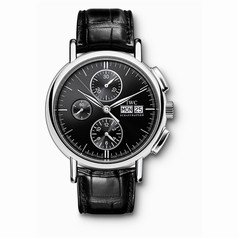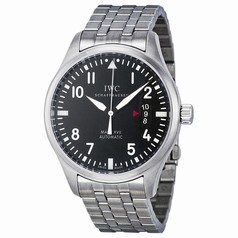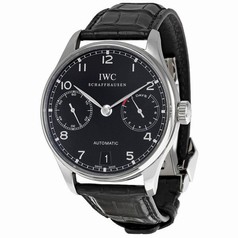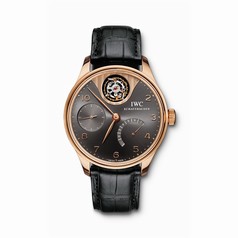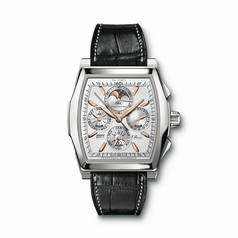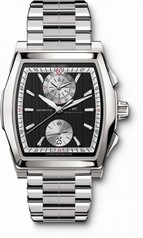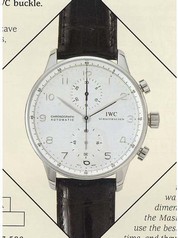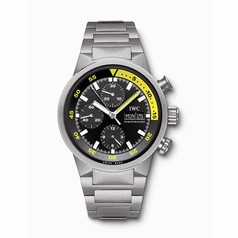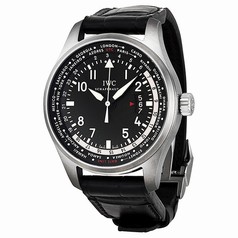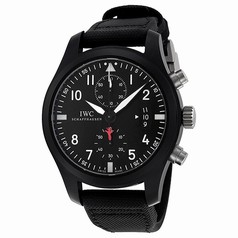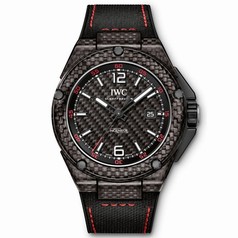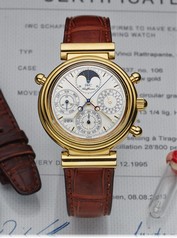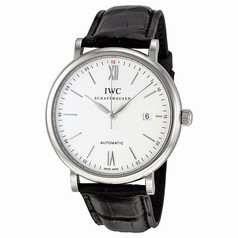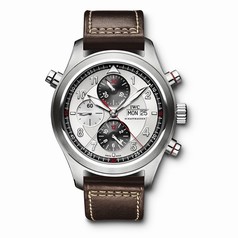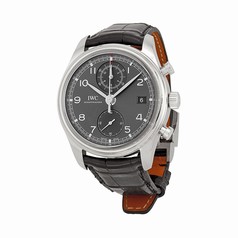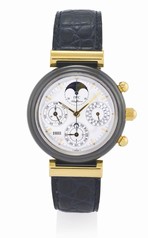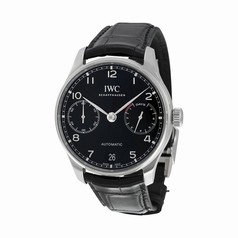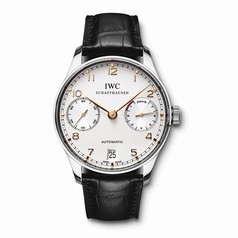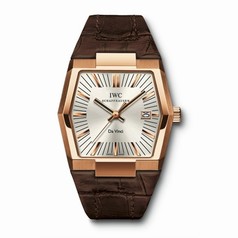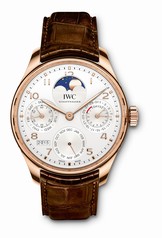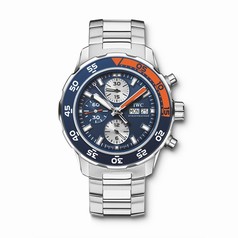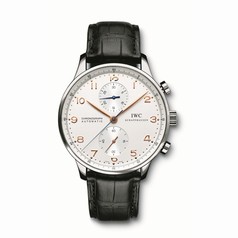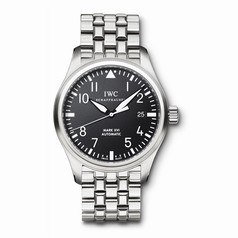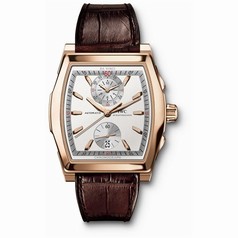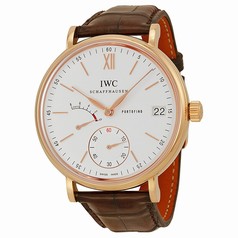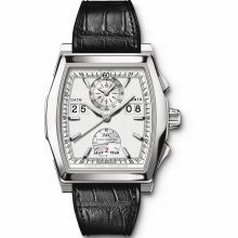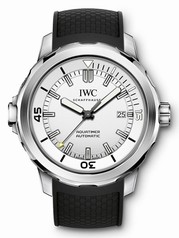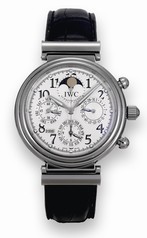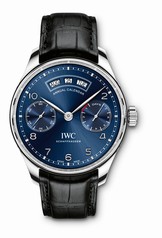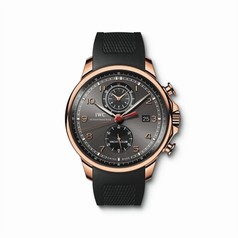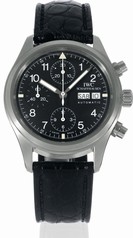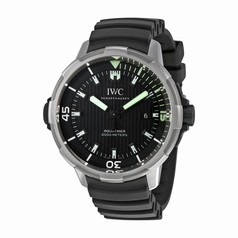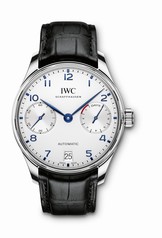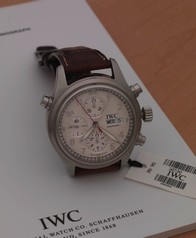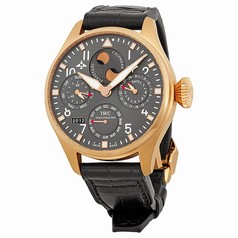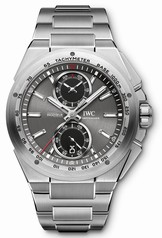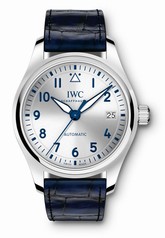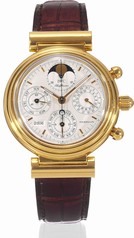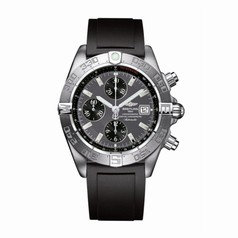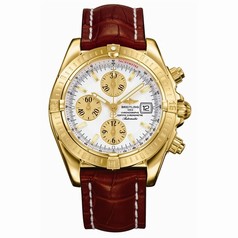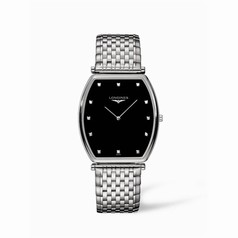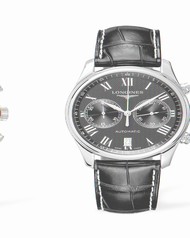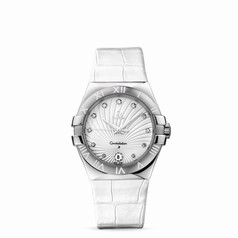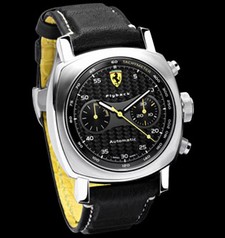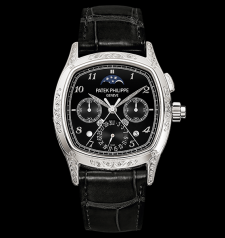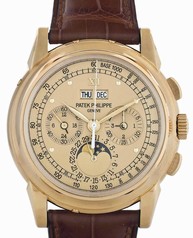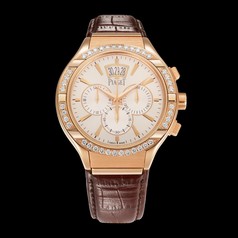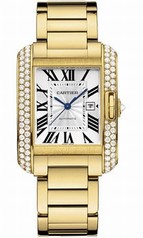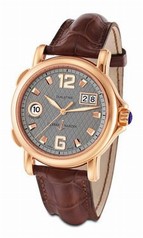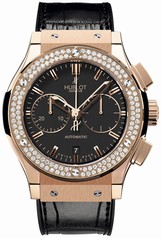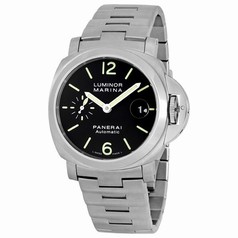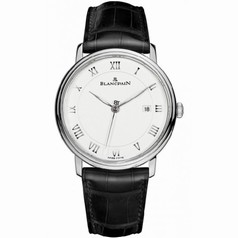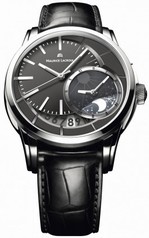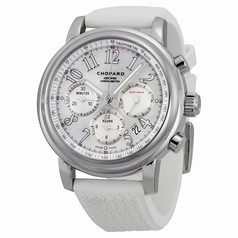-
IWC - New boutique
The IWC boutique at Bahnhofstrasse 61 is no longer the only one in Zurich - the Schaffhausen luxury watch manufacturer now has a second store in the city at Weinplatz 10. The new IWC boutique is located in the Haus zum Schwert opposite the Hotel Storchen at the famous Gemusebrucke. "We're happy about this opportunity to expand our presence in Switzerland's largest city and increase the visibility of our brand. In the future, even more watch lovers will have the chance to discover our mechanical timepieces. And they will do so in an exclusive environment with other luxury brands in one of Zurich's most beautiful shopping areas," says Linus Fuchs, IWC Managing Director Switzerland, explaining the reasons for the move. The boutique will operate as a joint venture with watch and jewellery specialists Zett Meyer. "We are pleased and proud that we can now write another chapter in our many years of cooperation with IWC", said Adrian Bindella, Managing Director of Zett Meyer.
IWC boutique at historic location
The latest IWC boutique is located at a site steeped in history. The Haus zum Schwert is first mentioned in records of 1406. It was for many years an inn and hostelry famous throughout Europe, whose celebrated guests include the composer Johannes Brahms and Germany's greatest literary figure Johann Wolfgang von Goethe. The interior of the new store has been designed to adequately reflect the prestige of this special building: dark wood, glass and natural stone create elegant surroundings for the presentation of the luxury watches from Schaffhausen. The interior combines tradition with innovation, and with its clear design language echoes the engineering ethos that has made timepieces from Schaffhausen so much sought after the world over. The display comprises current models from all six watch families - the Pilot's Watches, Portugieser, Ingenieur, Aquatimer, Da Vinci and Portofino - but also includes limited-edition models that are available exclusively at IWC boutiques. During the run-up to the festive season, the store will have special window decorations designed to get passers-by into the pre-Christmas spirit.
IWC Boutique Zurich
Weinplatz 10
8001 Zurich
Tel. +41 (0)43 521 14 85
-
IWC - Portuguese Perpetual Calendar Digital Date-Month edition "75th Anniversary"
With the new Portuguese Perpetual Calendar Digital Date-Month Edition "75th Anniversary" (Ref. 3972), the Portuguese watch family now includes a model featuring a digital display for the date and month. Its 45-millimetre case includes the perpetual calendar, the large digital date, the leap year display, the chronograph with flyback function and the IWC-manufactured 89801 calibre with its quick-action switch and efficient double-pawl winding mechanism.
On the occasion of its relaunch to mark the 75th anniversary of the Portuguese family, the watch is fitted with an arched-edge front glass and Santoni alligator leather strap and has a new calibre design.
Today, most people prefer to read the time with the help of hands but are happy if the date is shown in figures. So, the dial combines two striking, highly legible analogue displays (time and chronograph) with three digital ones (date, month and leap year).
While considering whether there was a way to make the figures in the various subdials of a conventional chronograph easier to process, the designers in Schaffhausen hit on the idea of displaying the stopped hours and minutes in a totalizer - just like the time of day. The stopped seconds continued to be shown by the central seconds hand.
From a design point of view this may seem ingeniously simple, but technically speaking it is very difficult to implement. To turn the "watch-within- a-watch" concept into reality, a team at IWC worked for 4 years on the in-house 89360-calibre chronograph movement with its particularly efficient double-pawl winding mechanism. In this assembly, four pawls arranged diagonally to the pawl wheel - in other words two sets of doublepawls - convey the push-and-pull motion from the rotor to the barrel. This solution eliminates dead spots during winding and boosts the system's efficiency by a significant 30 per cent. The further-developed in-house 89801 calibre is now used in the Reference 3972. Like its predecessor, it features an integrated flyback function that enables the user to reset the running stopwatch hands to zero simply by pushing the button, and to start another timing sequence immediately.
The IWC-manufactured 89801 calibre gets all its power from a second source of energy, the so-called quick-action switch. Every night, when the date display moves forward, the switch siphons off a little of the energy, stores it and then discharges it precisely at the end of the month or year when, in addition to the date and month disc, the leap year disc also needs to be advanced. The perpetual calendar can be set easily using the crown. It will not require correction until 2100, a year that breaks with the conventional 4-year cycle and will not be a leap year.
The see-through sapphire-glass back provides a view of the meticulously finished movement consisting of 474 individual parts. Following further development, the IWC-manufactured 89801 calibre now has a number of new features: the rotor and the inset "Probus Scafusia" medallion are now slightly more delicate in design and made of solid red gold. Other new highlights include the decorative blued screws, which together with the red jewels and the Geneva stripes on the plate constitute an attractive ensemble.
The watch is limited to 25 pieces in platinum and 75 pieces each in 18-carat red gold with either a black or silver-plated dial.
-
IWC - Ingenieur Automatic Carbon Performance Ceramic
As is well known, carbon fiber is ideally suited for use in motor racing. IWC Schaffhausen has utilized the unique properties of this material, which is twice as b as steel but only a fifth of the weight, and integrated it into the construction of its watch cases.
The Ingenieur Automatic Carbon Performance Ceramic is a piece of high-tech engineering with a carbon-fiber case and, as a new feature in this model, also has a mirror-finished ceramic bezel. The middle section of the case, which is held together by five screws, is manufactured according to the same principle as the core features of a racing car.
The watch's dial is also made of carbon fibre. It fits perfectly with the authentic motorsport look and gives the watch a visual sense of depth. For other parts of the case, IWC designers likewise took their inspiration from the materials used in motor racing. Ceramic for the bezel, screw heads, crown and crown protection, titanium for the screws and case-back ring, and rubber for the underside of the strap with its calfskin inlay.
The strap is sewn with green thread as an allusion to the stripes on the outer walls of the tyres fitted to the cars for racing in wet conditions.
The IWC-manufactured 80110-calibre movement is one of the company's most rugged and thoroughly tested movements and, thanks to its integrated shock-absorption system, is unaffected by extreme acceleration or sharp braking manoeuvres and vibrations, making it the ideal watch for racingdrivers. Perfectly in keeping with the design is the rotor, which is shaped like the pistons found in a Formula One racing car.
The Ingenieur Automatic Carbon Performance is available in a limited edition of 1,000.
-
IWC - Partnership with the British Film Institute
The announcement follows IWC Schaffhausen's long tradition of supporting film-making projects - a tradition which is evidenced by its established partnerships with the Tribeca Film Festival, the Dubai International Film Festival and the Beijing International Film Festival, and which demonstrates IWC's passion for film. IWC will also become the Official Time Partner of the BFI and the BFI London Film Festival from 2014.
"For many years now, we have had a passion for cinema. Every director tells a story with their films. At IWC, storytelling is part of the DNA of everything we do. It is therefore an absolute honour and privilege to be associated with such a highly regarded institution and a film festival which has depth and substance and that is globally renowned and respected," comments IWC CEO Georges Kern. "Our desire is to nurture this incredibly special relationship, build an exceptional partnership, and to create and deliver impeccable events. Our brands share many qualities, such as a long history, a proud heritage and a passion for cinema. I believe that these qualities will continue to be nourished and communicated in the years ahead."
BFI CEO Amanda Nevill said: "We are delighted to be at the start of a partnership with IWC Schaffhausen that holds so much promise. It is a company that shares our values of creativity, passion and ambition, and we look forward very much to working with them in bringing these values to life in programmes that can delight, entertain and provide life-long memories."
Ahead of the 2014 BFI London Film Festival, IWC will celebrate their partnership with a star-studded dinner in honour of the BFI. Simon Chambers, IWC UK Brand Director, comments: "The BFI is an exceptional charitable organization which relies on its supporters to fund its invaluable work as a guardian of our national film heritage. IWC is proud to be amongst those supporting the restoration, preservation and creation of film for the enjoyment of future generations. London is such a dynamic international city and the BFI London Film Festival offers IWC an opportunity not only to celebrate film but also the essence of both partners. We look forward to working with both the BFI and the Festival to create a most worthwhile partnership in the coming years."
IWC will also be the headline sponsor of the BFI's fundraising gala LUMINOUS in 2015.
-
IWC - Automatic for the people
I have great trouble explaining Baselworld to anyone who's not been. Seriously - is it possible to understand even remotely the galactic scale and Faustian ambition of Hall 1.0 without actually seeing it?
And what of the transient decadence of the pavilions (the word 'stands' is now etymologically insufficient for some brands, I gather)? How do you justify the cost of these things against the time they're actually of any use?
Or the people - oh, so many extraordinary people. Drawn from all corners of the globe as if answering the Siren's call, they are a perfect study in the peculiar diversity of the luxury world.
And how exactly does one insert into this inadequate explanation the preponderance of pushchairs? Yes, pushchairs - incongruous, incorrigible and infuriating, they trundle into the path of whirling wordies with inevitable frequency. Do they not know we have hopelessly ambitious appointment schedules to keep?
There is, I have concluded, little a dull-eyed Baselworld graduate can do to convey its majesty and its madness.
By contrast, what I can allude to with considerably more lucidity is the nature of the wristwatch that accompanied me on my annual Baselworld pilgrimage this year.
Rather like the fellow at school who always wore non-regulation shoes, I went off message and travelled with one of my picks from this year's SIHH strapped to my ulna - the IWC Ingenieur Automatic (black dial, for the record).
I've liked this watch ever since I first laid eyes on it, and judging by the reactions I got as it peeked out from under my cuff at the fair, I'm far from alone. The consensus among those prepared to offer a view - which, given this profession attracts the firm of mind, was most - was that it was the standout piece in IWC's line-up this year.
There was a caveat to the appraisals, mind. Its superiority, so went the rationale, owed as much to the aesthetic paucity of the other nine pieces in the revamped Ingenieur line, as to its own excellence.
Which will be an uncomfortable sentiment for IWC. While I don't agree with it entirely - I had the black-dialled version of the Double Chronograph Titanium on my wrist for a few days earlier this year and found little wrong with it - I'm happy to argue the case that IWC tried to do too much with the Ingenieur reboot. It felt overthought and overwrought.
No little irony then, that the one thing they didn't do was make all the new pieces antimagnetic - that quality has been attributed only to the Automatic. Which was perplexing. The Ingenieur is one of the great antimagnetic watches of the last 60 years, but without its original trick it feels like a Land Rover without four-wheel drive. It stops making sense.
On top of that, it's a missed opportunity. Anti-magnetism is big this year and I'll happily nail my colours to the mast and say technical developments made in this area will prove to be the most significant over the course of this decade - just as the use of silicon was in the last. IWC could and should have shared in the antimagnetic spoils this year - and probably will further down the line - given it's a brand that rightly prides itself on its engineering creds.
But enough of that. Because what I really wanted to say is how good the Automatic is. As well as being antimagnetic, its proportions are nigh on perfect (on my wrists, an extra millimeter on the 40 would have been handy - but I'm nitpicking); its bracelet is a lesson in ergonomics and very simple to adjust; and because it's a faithful restyling of the late, great Gerald Genta's 1976 IWC Ingenieur SL, its kudos is guaranteed.
I'd suspected as much beforehand, but Baselworld confirmed it - the IWC Ingenieur Automatic is one of this year's standout watches.
-
IWC - Reengineering an Icon
WORLDTEMPUS - 15 February 2013
I'm never quite sure which would be harder: creating a new brand that doesn't look like an existing one, or maintaining an existing brand so that it looks like itself.
Let me explain what I mean by referring to a conversation I had with the founder of a watch brand launched last year - forgive me if I don't say which. The biggest task he faced in designing a brand and a product was, he said, to "make sure it didn't look like IWC."
His point was partly that too many new brands copy existing brands, but also that to succeed, a new brand would need to have a design code as b, individual and immediately recognizable as that of IWC.
I found it interesting that he picked out IWC. Not surprised, mind. In the last few years, the old Schaffhausen-based watch company has upped its game and is now one of the most effectively branded of the fine watchmaking houses.
Together, its website, iPad app, Watch magazine, catalogues, press kits and, of course, products bear comparison to some of the world's leading brands in terms of consistency - maybe not quite to Apple or Coke, but not far off. Only the brand's ads let the side down - it's the only place I can find that condensed font, for example. Still, I'm nitpicking.
The great identity parade
Anyway, this is all background to a catch-up I had with Christian Knoop at SIHH last month. Knoop is IWC's creative director and the man charged with penning the latest line of Ingenieur watches, which was launched at the fair.
He's also now the design author of two-thirds of the IWC collection. He's been at the company for four years and in that time has overseen the redesign and relaunch of four of the six IWC watch families: the Portuguese, the Portofino, last year's Pilots' Watches and now the Ingenieur. No doubt he'll be around to complete the set, with Da Vinci and Aquatimer set to follow in the next two years.
Knoop learned his trade in industrial design and his patter is dotted with buzzwords like "product," "variability," "archetype" and the forgivable neologism "technicity," a word that no doubt closely translates from his German mother tongue and one I see no reason to adapt - however, when Knoop uses it, it makes sense.
"Identity is of growing relevance," he begins when asked to comment on current trends in the watch industry. "All brands have to define their territory and sharpen their identity so they're recognizable in a growing and crowded market. The general quality of design has grown enormously in all industries and nowadays I see many brands that have excellent design detailing and excellent products, so it's key to the brands and especially to us at IWC to make product ours in terms of identity."
This is a refreshing take - for starters, he didn't mention China, which most leading industry characters seem incapable of avoiding when discussing trends of the trade. But Knoop's line aligns perfectly with the furrow IWC is plowing these days.
More functions, more materials
He goes on. "This means we have to work on product quality and product aesthetics that underline our brand values, so that each of these products cannot only be identified as an IWC product in this crowded market place, but also so that each of these products fully supports the brand. In that sense the Ingenieur is the perfect example because it's about engineering, it's about technicity and it has a very masculine design. These are IWC brand values that come to life in this year's new products."
Knoop wanted the 2013 Ingenieur line-up to be more technical than previous incarnations, offering more functions and more materials - a goal he's achieved with a collection of nine models that includes constant force tourbillon and digital perpetual calendar complications and case materials like ceramic, carbon and titanium aluminide, the latter a high-performance alloy introduced into watchmaking via IWC's new engineering partnership with the Mercedes AMG PETRONAS F1 Team.
Four times more scratch-resistant than normal titanium, much lighter and more shock-resistant than steel, and now banned in F1 because of the sport's compulsory budget caps, titanium aluminide is very on-brand for IWC, and, as Knoop says, "a great continuation of the titanium story, which is an IWC story." IWC pioneered the use of titanium in watchmaking in the 1980s and the material is used in its "normal" guise elsewhere in the new Ingenieur family.
History - friend and foe
Knoop is keen to point out that keeping an eye on past brand milestones like this is a big part of designing a new collection, albeit that as a designer he feels compelled to come up with something novel. "When we looked at the Ingenieur line, there were two remarkable points in time that were very relevant," he says. "One was the moment of birth of the Ingenieur in the 1950s. That was IWC's first watch with an automatic movement and carried the first Pellaton Winding System, and it was fitted with a soft-iron inner case, like the Pilots' Watch before it.
"The other was in the 1970s, when IWC designed the famous Ingenieur SL with Gerald Genta," he continues, remembering how IWC turned to the celebrated watch designer to revive its fortunes in the face of the quartz crisis. "His piece gathered design of that time and became the Ingenieur archetype. Everything we did when looking at the new Ingenieur, we compared with the original pieces. As you can see, the Ingenieur Automatic takes a lot inspiration from that first piece from Gerald Genta."
Indeed it does - and it's one of the best pieces in design terms to emerge from this year's SIHH, certainly a favorite of mine. Knoop never met Genta (who died in 2011) and admits he felt a lot of pressure when tackling one of IWC's most iconic products.
The Ingenieur is IWC
You can see how Knoop's interpretation of watch market trends has influenced the new collection - it's both on-brand and enhances the brand. The new Ingenieurs are heavily engineered, very masculine, and will act as a pivotal cog in the brand's increasingly active marketing strategy, which is now fuelled by the Ingenieur's link to Mercedes F1. You could say, in fact, that they look just like an IWC.
-
IWC - Kurt Klaus Remembers
WORLDTEMPUS - 2 January 2013
At the ripe old age of 78, Kurt Klaus still makes a wonderful impression on those around him: impeccably dressed, beautiful manners, and the most interesting conversation a horological nut could ever wish for. This is what you get when you have the pleasure of spending an afternoon with one of the true masters emerging from the ashes of the quartz crisis and leading one into the golden sun of the mechanical renaissance.
In fact, Klaus was one of the best proponents of the mechanical renaissance. Beginning at IWC in 1957 under Albert Pellaton, Klaus felt at the time that he had a lot to learn fresh out of watchmaking school in Solothurn and after a stint at Eterna. "Pellaton was Mr. IWC," Klaus explained. "He was technical director, movement designer, inventor, and production head all in one." Klaus then went on to explain that in those days, the main objective of not only IWC, but watchmaking in general, in designing and producing movements was rate precision.
In the second half of the 1970s, IWC went from around 350 employees to about 100 - which was not uncommon for any Swiss watchmaking firm at this time. The company was close to bankruptcy, but survived in part by making solid silver model cars for Porsche and chassis for airplanes in addition to a few watches and a four-day work week for the remaining employees.
It was during this time that Klaus began coming into the workshop on the fifth day, which he had off due to cost-saving measures, to try out some ideas for movements that he had. Pellaton had passed away, and the company was basically without technical direction. You see, Klaus was working on a calendar movement for a pocket watch. This represented not only the first movement design Klaus had undertaken by himself, it was also the first complicated watch produced by IWC. This calendar with moon phase ended up being introduced at the Basel Fair of 1976 to such acclaim that Klaus was asked to produce 100 of them. The "Moon Phase Watch," as it came to be known, was introduced in the midst of high-tech quartz having taken the lead, and by the second day of the fair all 100 had been ordered, Klaus related. "For me, this actually represented the renaissance of the mechanical watch."
This pocket watch was the basis for the Da Vinci perpetual calendar wristwatch, which appeared on the scene in 1985. "This was something totally new," he explained, "something that the quartz movement could not yet do. He went on to explain that he found the mechanical renaissance an "adventurous time," in which one needed new ideas in order to make a difference. The first three prototypes made for the Basel Fair in 1986 were handmade by his own two hands. He also cites the creative ideas and b sales skills of Hannes Pantli, now a member of the board of directors and its spokesman, as the reason that IWC was able to survive during this time of crisis. "I don't know how we would have survived without him," Klaus wistfully says, "he got everything out to the people who were looking for it."
At some point this wonderful afternoon had to draw to a close, and so it was with a pang of sorrow that I got back on the train to go home…certain, however, that I would soon be back to Schaffhausen.
-
Roger Dubuis - Reshaping the portfolio
WORLDTEMPUS - 4 February 2011"Daring, incredible, exciting!" Marketing director Christine Louvet positively spewed descriptive buzzwords as she presented the new products issuing from Geneva-based watch company Roger Dubuis. This brand saw the light of day in 1996 when Portuguese entrepreneur Carlos Dias and extraordinary watchmaker Roger Dubuis created their first two watches, which were christened Hommage and Sympathie.
Fast forward to 2011. Neither the man behind the name nor the man behind the money is still with the company the two created. Roger Dubuis - the brand - is now owned by Richemont and in the midst of a radical makeover designed to streamline the 15 in-house movements as well as the many, many references called to life during the company's highly productive 16 years.
Louvet also underlined, "It is important for us to improve our relationship to our clients," and, "quality has been priority number one since the Richemont takeover." These remarks clearly illustrate the issues that had cast a shadow over the Roger Dubuis brand in the last years of Dias's ownership.
Casino and Chesterfield
At SIHH 2011, Louvet's "daring, incredible, and exciting" lines were transformed into a brand-new collection called La Monegasque. This name was inspired by the Lilliputian state of Monaco and its "daring" and "exciting" James Bond world of thrilling casino play.
La Monegasque's case shape resembles the very first timepiece that left Roger Dubuis's Geneva premises in 1996, Sympathie. The new dials, layout, and functions are, however, toned down in comparison to the creative craziness that former owner Dias clearly preferred. The new management, for the moment under the auspices of IWC CEO Georges Kern, is already making its mark. As highly in evidence at the IWC and Baume & Mercier booths, Kern has taken to "telling stories" with his brands in 2011 - with Roger Dubuis's obviously taking place in southern France.
The La Monegasque line encompasses three models in stainless steel or gold: a 42-millimeter time-only with small seconds, a 44-millimeter chronograph (with a 44-millimeter perpetual version), and a limited edition 44-milimeter chronograph called Big Number that boasts a wonderful, thick strap inspired by Chesterfield furniture by Italian shoemaker Santoni.
Because the distinct green-and-red roulette design is only utilized on the limited edition chronograph La Monegasque Big Number, some visitors to the booth were left wondering why Monaco and its world of casino was the brand's main theme. Indeed, the "story" is the means to the end here, and it is this debonair, thrill-seeking motif that the brand is now striving to add to the wristwatches' essence from the outside.
Some friendly help
The La Monegasque line was designed by 41-year-old Lionel Favre in collaboration with IWC's chief designer, Christian Knoop. "Under the supervision of Georges Kern, we created the Monegasque collection in less than nine months, concentrating on dial design," smiles Favre as he remembers how fast they worked. Speaking to Knoop later that week, it was confirmed that he also truly enjoyed working on Roger Dubuis's new products, agreeing with Favre's enthusiastic take.
Thrill-seeking design
Was the name of the new collection perhaps decided upon to merely to suck up to European wealth by using the name of the popular gaming state? Favre reply is not surprising, "Yes and no. Gaming is popular all over the world, not least in Asia. Traditional gambling is thrill-seeking to everybody."
Naturally, Favre is correct. Think of the former Portuguese colonial island Macau, just off the coast of central Hong Kong. This hotspot for many game watch aficionados is the perfect place to purchase the next luxury timepiece after the ball has landed on a lucky number.
Lucky numbers
Speaking of numbers, Roger Dubuis will still offer editions of 28, 88 and 128 pieces. According to Asian belief, the lucky number 8 stands for prosperity. Other models are will have non-limited production.
Numbers in terms of pricing range from 14,000-67,000 Swiss francs, with the latter the gold perpetual calendar.
-
IWC - Gala evening with international stars
On the occasion of the SIHH watch show in Geneva, IWC Schaffhausen celebrated its new Portofino watch collection with a glamorous event attended by 900 guests and well-known Friends of the Brand. Cate Blanchett and Kevin Spacey enjoyed "A night in Portofino" in the same carefree style as Elle Macpherson, Jean Reno, Matthew Fox and Marc Forster. Other friends are Boris Becker, Luís Figo and Zinedine Zidane as well as Tim Jefferies and Ronan Keating. Further highlights of the evening included the world premiere of a photo exhibition featuring these friends and other stars shot by celebrated photographer Peter Lindbergh, a "making-of" film of the shoot and an impressive performance by Zurich Opera House, with a 60-b orchestra and tenor Neil Shicoff.
For 900 guests from all over the world, "A night in Portofino" was an unforgettable event that captured the irresistible style of the1950s and 60s. Stepping on to the red carpet were Hollywood stars Cate Blanchett and Kevin Spacey together with other Friends of the Brand such as Matthew Fox and Jean Reno, sports legends Boris Becker, Luís Figo and Zinedine Zidane, director Marc Forster, top model Elle Macpherson, vocalist Ronan Keating and gallery owner Tim Jefferies. Each of them had seized this opportunity to come to Geneva to celebrate the elegant Portofino watch family from IWC Schaffhausen. This select group had already caused quite a stir in Portofino back in May 2010, when the Schaffhausen-based company invited the Friends of IWC to a photo shoot in the Italian coastal resort that had inspired the name of the Portofino series. Influenced by the spirit of the 1960s, the period props and clothing provided a realistic setting for a glamorous portfolio of photographs. None other than Peter Lindbergh, one of the greatest photographers of them all, portrayed the Friends of the Brand against the nostalgic backdrop of a 50s/60s-style Hollywood film set. Whether it was Cate Blanchett eating an ice cream whilst clutching Kevin Spacey's arm, Elle Macpherson and Eric Dane on a scooter radiating genuine Italian lifestyle or Luís Figo and Matthew Fox aboard a sleek powerboat, the stars clearly had a whale of a time and set off the Portofino watch models to their best advantage. The resulting exhibition, "Peter Lindbergh's Portofino", consists of a series of impressive black-and-white photographs and celebrated its world premiere at the gala evening. The exhibition is scheduled to take on a world tour and will provide an additional highlight at IWC events in various big cities throughout the Middle East, Asia, America and Europe.
Highlights of the evening
Tim Jefferies and Georges Kern got the evening off to an entertaining start by introducing the Friends of the Brand, before announcing the next attraction. During the photo shoot in Portofino, a camera team had followed Peter Lindbergh at work and had put together a "making-of" movie showing the - occasionally unintentional - comic situations that arose featuring paparazzi, bodyguards, umbrellas and overly enthusiastic autograph hunters. Produced exclusively for the gala evening, this peek behind the scenes showed that many of the stars had made the journey to the picturesque harbour town with their families, some of the Friends of the Brand gave impromptu demonstrations of their many talents. Inspired by Mediterranean cuisine, the Italian specialities that followed the "making-of" movie were no less imaginative. But before the culinary voyage came to an end with the dolci, there was one more special treat that promised entertainment at the highest level. Zurich Opera House took to the stage with a 60-b orchestra to perform pieces redolent of Italy's rich cultural heritage in the form of well-known arias such as "Nessun dorma" from Puccini's "Turandot", "La donna e mobile" from Verdi's "Rigoletto" and the incomparable "O sole mio". Under the baton of conductor Paolo Carignani, the orchestra performed flawlessly, providing the perfect accompaniment to Neil Shicoff, whose powerful tenor voice enraptured his audience. Guests danced away the final part of "A night in Portofino" to the music of DJ Jack.E.
-
IWC - Da Vinci Chronograph Ceramic
What belongs together comes together. IWC Schaffhausen is treating its chronograph movement to a ceramic case made of zirconium oxide. Entirely in the spirit of its namesake Leonardo da Vinci, the Da Vinci Chronograph Ceramic embodies innovation and first-class engineering in perfected form.
The world owes a great deal to Leonardo da Vinci. The universal genius from Tuscany created incomparably beautiful works of art, investigated and documented natural laws, and designed buildings and machines which were often far ahead of their time. Innumerable sketches also provide evidence of his enthusiasm for watchmaking. Many of his pioneering discoveries in the area of helical and bevel gears and complicated screw transmissions are to this day component parts of many machines - including watches.
Fascinated and inspired by the spirit of Leonardo, the watchmakers of IWC Schaffhausen have given the name Da Vinci to particularly innovative models at regular intervals in the past. The Da Vinci model from1985, for example, made watchmaking history. At a stage when quartz already appeared to have superseded mechanics in the measurement of time, the Schaffhausen company focused its attention on the beauty and strength of mechanics and built a mechanical chronograph with a perpetual calendar, which played a part in the renaissance of the mechanical watch. The design of the complicated mechanism and its user-friendly operation can be summarized as being ingenious in their simplicity. Only one year later, in 1986, IWC Schaffhausen provided further proof of its love of innovation by building the first watch with a case made from the extremely hard, scratch-resistant and impact-resistant ceramic, zirconium oxide. This milestone of case engineering also bore the name Da Vinci.
In the year 2007, when IWC Schaffhausen presented its newly developed flyback chronograph movement, this appropriately made its debut in the completely redesigned Da Vinci family. The IWC-manufactured movement is conspicuous with a number of design features that are unique. Particularly noteworthy is the display of the recorded time, which has bid farewell to all its classic predecessors in the interests of improved user-friendliness. The recorded hours and minutes can now be read on a counter in the 12 o'clock position like a second time display. The 89360 calibre also stands out with a new double-pawl winding system and a flyback function: actuation of the lower button during a timing function causes the recorded time to return to zero and restart immediately, but without stopping the stopwatch mechanism.
Such an extraordinary movement also merits an extraordinary case, in addition to a see-through sapphire-glass back; after all, the Da Vinci family is still inspired to this day by the special ability of Leonardo to think and act innovatively and imaginatively both technically and creatively. The tonneau-shaped design, which draws its strength from the interaction between edges and curves, between convex and concave forms, has now been translated into an exceptional material combination of ceramic and titanium in the new Da Vinci Chronograph Ceramic.
The central section of the ceramic case of the new Da Vinci Chronograph Ceramic consists of zirconium oxide, which was first used in a watch case in 1986 - in a Da Vinci. This model was produced in only very small numbers because of the enormous difficulty in machining the hard material. Over the years, however, the technicians and engineers have acquired a lot of experience in the manufacture and machining of this extremely scratch-resistant, non-magnetic and acid-proof ceramic. The case blanks can now be formed more efficiently and with greater accuracy than before from the mixture of zirconium oxide powder and a binder. They are sintered at temperatures between 1500 and 2000 degrees Celsius followed by cooling in a complicated process to enable the material to attain all of its outstanding properties. Diamond tools are required for the intricate finishing of the blanks. At this point, the specialists at IWC possess such thorough mastery of this technology that the new Da Vinci Chronograph Ceramic will be available in unlimited numbers as a model in the collection.
What is more, the case stands out with a technical highlight that is admired by experts. It is manufactured with such precision that the movement can be fitted directly into the ceramic case - without a movement security ring. The bezel, back, buttons and crown provide a colour contrast in the form of ultra-hard titanium grade 5, which, unlike the titanium alloys formerly used by IWC, can be polished and satin-finished. These two materials, titanium and ceramic, are not only extraordinarily robust and scratch-resistant, but they also have an extremely pleasant, silk-like feel. The special three-dimensional design of the dial with a rehaut volant - a tonneau-shaped minute display, which appears to float above the dial - adds to the attractiveness of the latest Da Vinci model. This flying chapter ring, a first for IWC, arcs in parallel with the sapphire glass and in so doing visually reduces the height of the inside of the bezel. The overall appearance is rounded off by a high-quality calfskin strap, to which a special finishing technique imparts a surface structure resembling that of a high-tech woven fabric. With the new Da Vinci Chronograph Ceramic, IWC Schaffhausen has achieved an impressive combination of high-tech and elegance.

